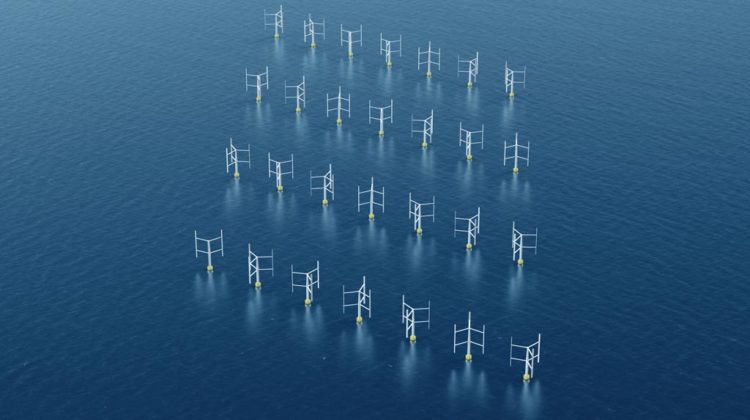
Offshore wind turbines that use a vertical design rather than the conventional ‘propeller’ design are much more efficient in large-scale wind farms, according to a new study. When used in pairs, vertical turbines can boost each other’s output by up to 15 per cent, the research revealed.
Researchers from the School of Engineering, Computing and Mathematics (ECM) at Oxford Brookes University in Headington, Oxford, used more than 11,500 hours of computer simulation to show that Vertical Axis Wind Turbines (VAWTs) perform more efficiently in compact wind farms than the traditional Horizontal Axis Wind Turbines (HAWTs).
The team found that the positioning of the turbines was critical to the design of wind farms. When arranged in a grid formation, the VAWTs increased each other’s performance.This is in direct contrast to HAWTs, which often interfere with each other’s performance. ‘Modern wind farms are one of the most efficient ways to generate green energy; however, they have one major flaw: as the wind approaches the front row of turbines, turbulence will be generated downstream,’ said Joachim Toftegaard Hansen, the study’s lead author. ‘The turbulence is detrimental to the performance of the subsequent rows.
‘In other words, the front row will convert about half the kinetic energy of the wind into electricity, whereas for the back row, that number is down to 25–30 per cent,’ he continued. ‘Each turbine costs more than £2million/MW. As an engineer, it naturally occurred to me that there must be a more cost-effective way.’ ‘This study evidences that the future of wind farms should be vertical,’ said Professor Iakovos Tzanakis, who led the stud. ‘Vertical axis wind farm turbines can be designed to be much closer together, increasing their efficiency and ultimately lowering the prices of electricity. In the long run, VAWTs can help accelerate the green transition of our energy systems, so that more clean and sustainable energy comes from renewable sources.’

